What more can be said about Little Richard that the man himself hasn’t already proclaimed with unmatched fervor? “I am the innovator! I am the originator! I am the emancipator! I am the architect! I’m rock & roll!” Little Richard, born Richard Penniman in Macon, Georgia, in 1932, declared with characteristic confidence. It wasn’t vanity; it was the unadulterated truth. His impact on music is immeasurable, and his catalog of songs remains a cornerstone of rock and roll history.
Little Richard’s influence reverberates through generations of musicians. The Beatles drew inspiration from his ecstatic falsetto cries, and James Brown credited him with injecting “the funk in rhythm.” Bob Dylan, in his yearbook, famously aspired “to join Little Richard,” and a young David Bowie picked up a saxophone with similar dreams. The flamboyant glam rock era of Bowie, the swagger of Mick Jagger, and the sexually charged performances of Prince all owe a debt to Richard’s groundbreaking and androgynous stage presence.
As a pioneer of rock and roll, Little Richard stood apart. His raw sexual energy was unrestrained, unlike Elvis Presley’s charming demeanor, Chuck Berry’s clever lyrics, Jerry Lee Lewis’s rebellious persona, Buddy Holly’s pop sensibilities, or Fats Domino’s amiable style. Richard’s signature feral woo uniquely blended the spiritual and the sensual, forever changing how musicians conveyed desire. Jimi Hendrix famously stated, “I want to do with my guitar what Little Richard does with his voice,” a testament to Richard’s vocal power and innovative approach.
This article dives into some essential Little Richard Songs, exploring the tracks that cemented his legacy as a true rock and roll icon.
“Tutti Frutti” (1955)
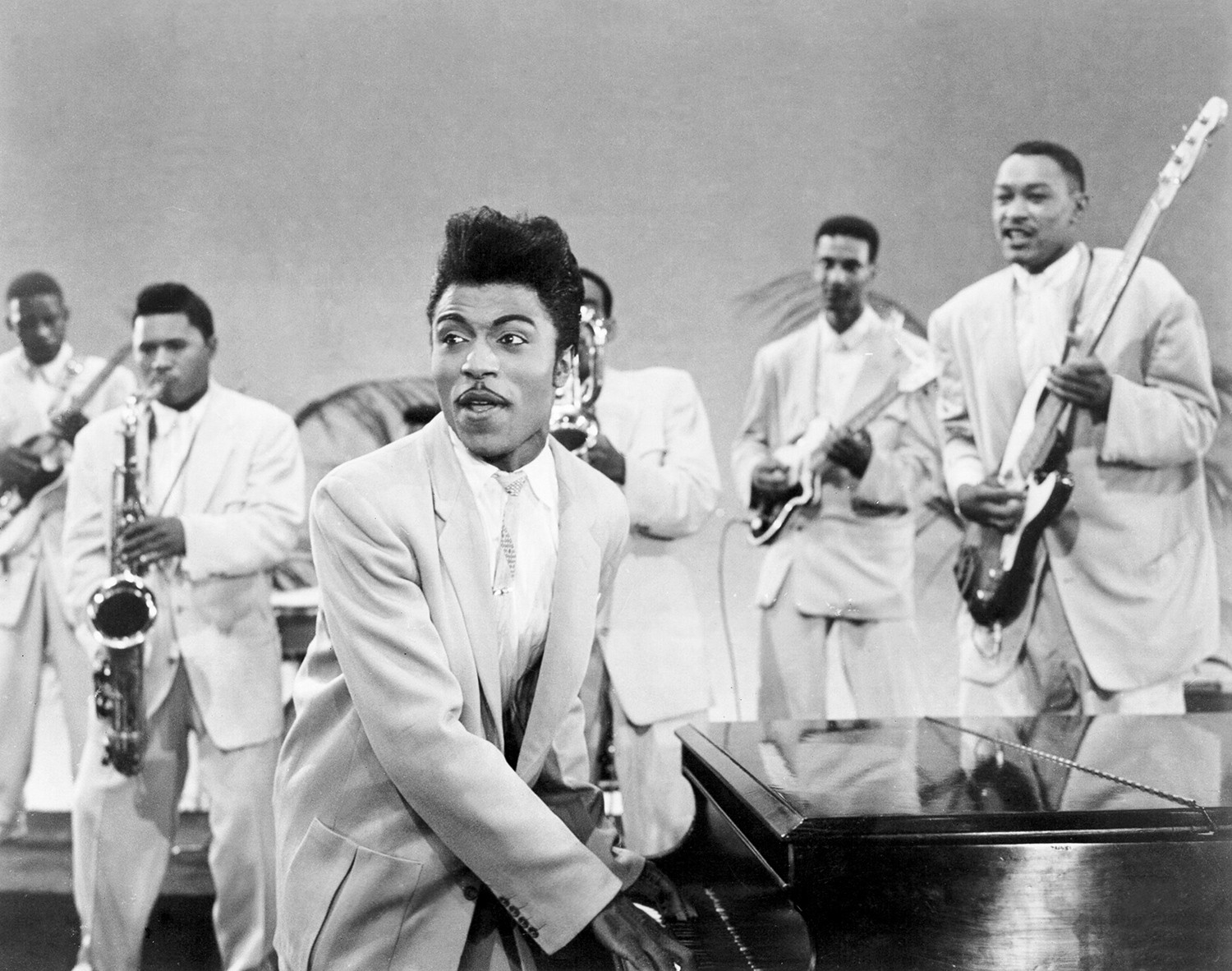 Little Richard best songs, Little Richard greatest hits, rock and roll pioneerImage Credit: Michael Ochs Archives/Getty
Little Richard best songs, Little Richard greatest hits, rock and roll pioneerImage Credit: Michael Ochs Archives/Getty
“A-wop-bom-a-loo-mop-a-lomp-bom-bom.” With these iconic nonsense syllables, Little Richard arguably penned rock and roll’s greatest opening lyric, initially intended to mimic a drum fill. Another version of the story claims it was his way of talking back to his boss while working as a dishwasher at the Macon Greyhound station. Producer Bumps Blackwell recognized the hit potential in Richard’s energetic outburst during a recording session break. He enlisted songwriter Dorothy LaBostrie to sanitize the original lyrics, which openly celebrated “good booty” and offered explicit sexual instructions. While “Tutti Frutti” was toned down from “explicit” to “suggestive,” Richard’s lustful and energetic onomatopoeia still conveyed a raw, carnal joy that transcended mere words. The sheer energy and rhythm of the track made it an instant classic and a defining moment in early rock and roll.
“Long Tall Sally (The Thing)” (1956)
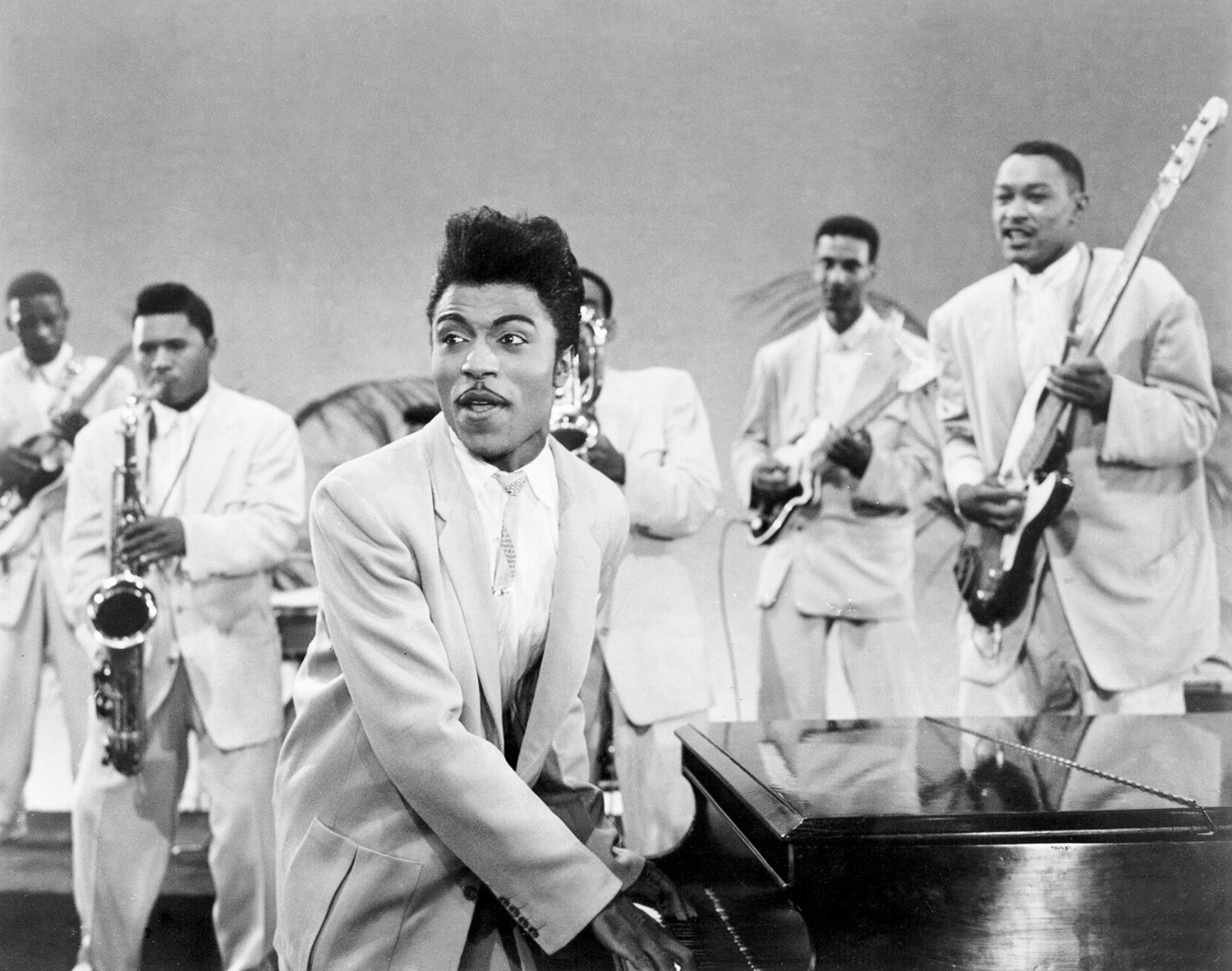 Little Richard Long Tall Sally, early rock and roll hits, influential rock songsImage Credit: Michael Ochs Archives/Getty
Little Richard Long Tall Sally, early rock and roll hits, influential rock songsImage Credit: Michael Ochs Archives/Getty
Building on the success of “Tutti Frutti,” “Long Tall Sally” continued Little Richard’s exploration of suggestive themes with even more playful innuendo. The lyrics hint at a clandestine encounter between Uncle John and Sally, discovered in an alley. Despite Richard’s vocal performance suggesting he’s on the side of the “revelers” rather than the “scold,” the secrecy and Sally’s “bald head” contribute to an atmosphere of something illicit and unconventional. This wild energy propelled “Long Tall Sally” to become Richard’s first R&B chart-topper and his first Top 10 pop hit. Its infectious rhythm and rebellious spirit proved irresistible to generations of musicians, most notably The Beatles. John Lennon famously declared, “When I heard it, it was so great I couldn’t speak,” and Paul McCartney meticulously studied the song, making it a staple of the Fab Four’s early performances.
“Slippin’ and Slidin'” (1956)
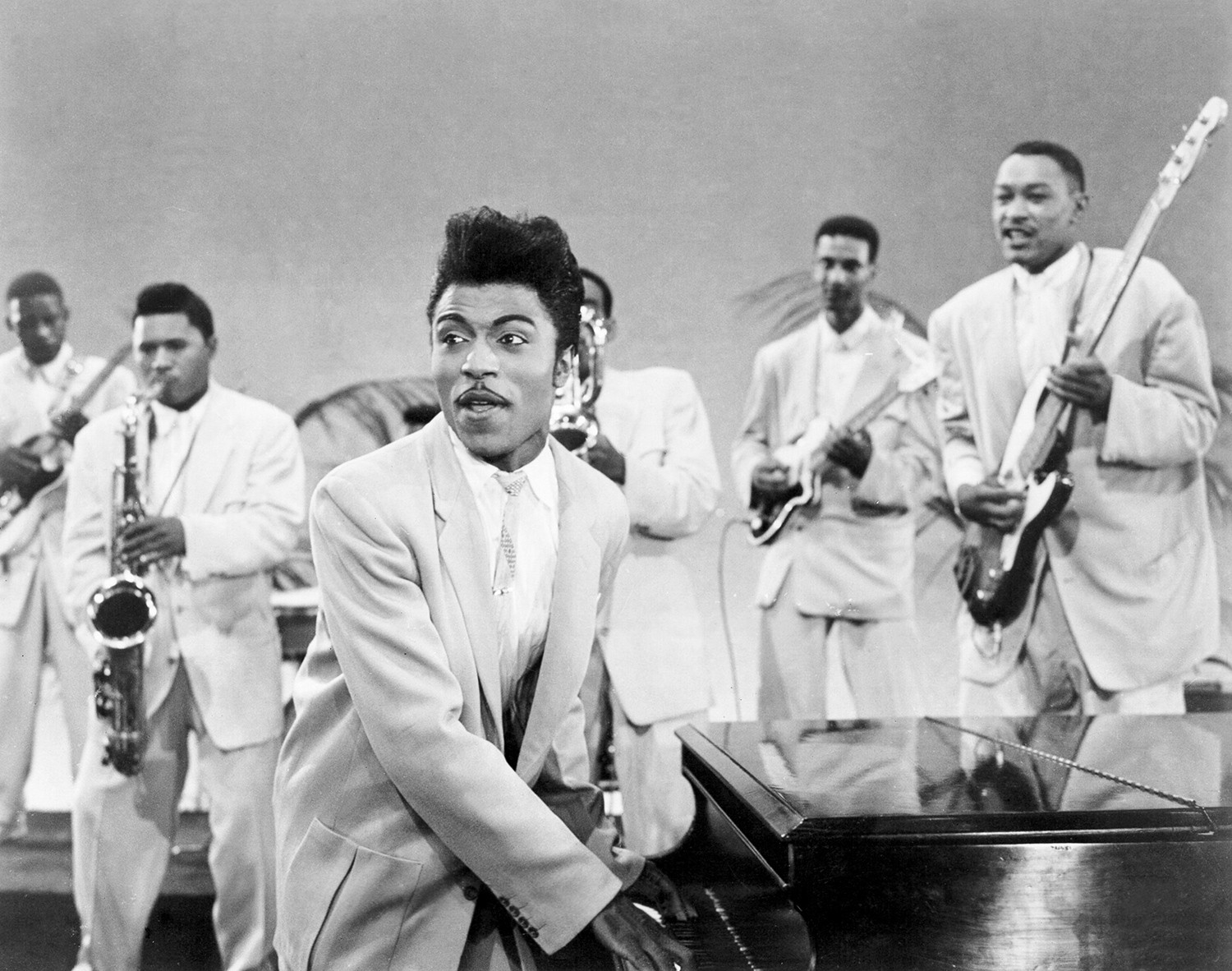 Little Richard Slippin' and Slidin', rock and roll rhythm, Little Richard's signature soundImage Credit: Michael Ochs Archives/Getty
Little Richard Slippin' and Slidin', rock and roll rhythm, Little Richard's signature soundImage Credit: Michael Ochs Archives/Getty
“Another cat put ‘Slippin’ and Slidin” out before I did, Eddie Bo, and it was a hit by him in New Orleans,” Little Richard recounted to Rolling Stone in 1970. “They put mine out the following week, and it killed him, because he didn’t have the rhythm, you see, he didn’t have that thing I have.” Comparing Richard’s fiery rock and roll rendition to Eddie Bo’s smoother New Orleans R&B shuffle (titled “I’m Wise”) highlights Richard’s distinctive “thing” – his je ne sais woo. While pianists like Jerry Lee Lewis and Chuck Berry sideman Johnnie Johnson may have been more melodically inventive, Little Richard’s percussive piano style is essential to his sound. His powerful key-smashing provides the rhythmic foundation, allowing master drummer Earl Palmer to add intricate flourishes underneath. “Slippin’ and Slidin'” is a prime example of Little Richard’s rhythmic innovation and raw energy.
“Ready Teddy” (1956)
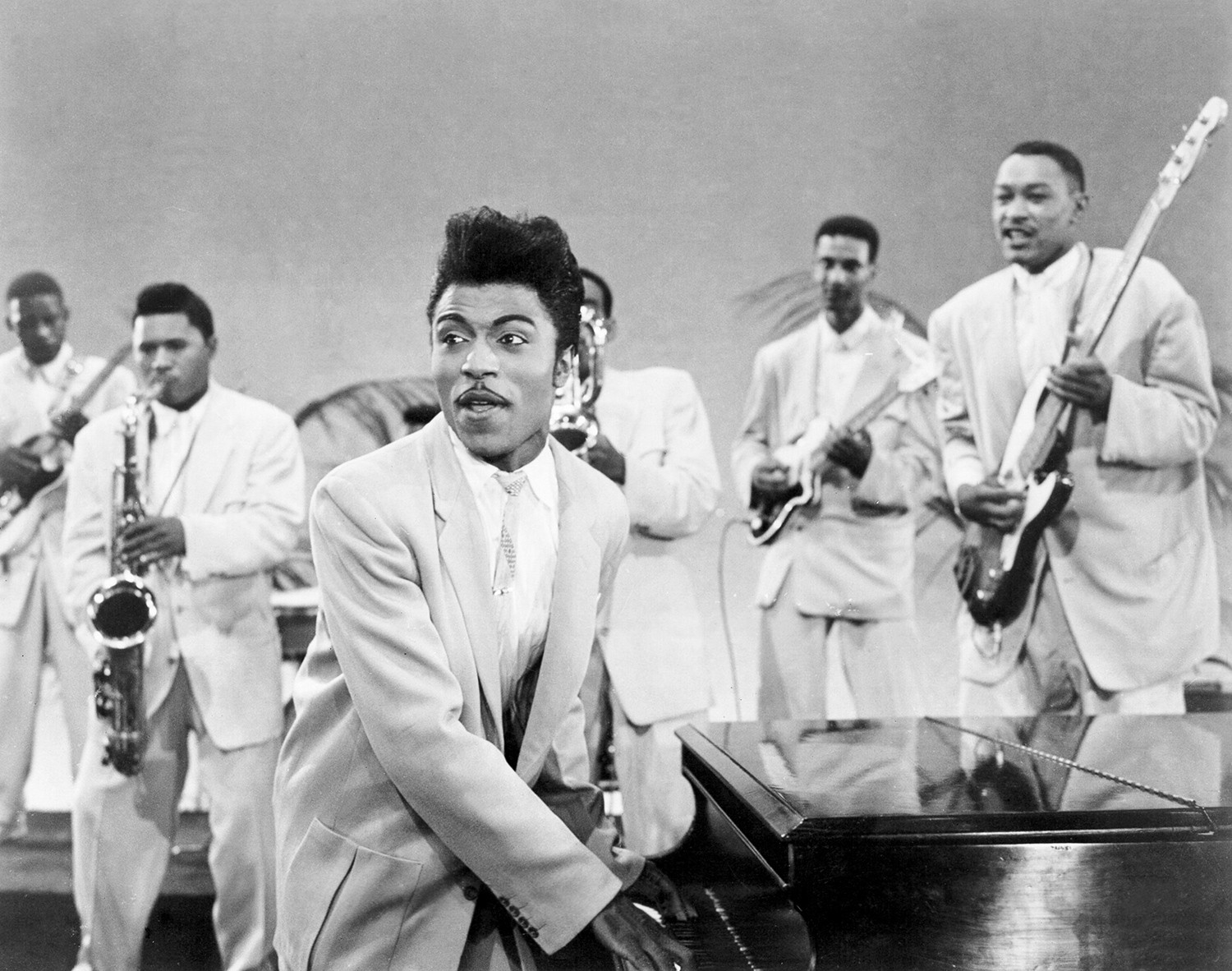 Little Richard Ready Teddy, high-energy rock and roll, Little Richard vocal performanceImage Credit: Michael Ochs Archives/Getty
Little Richard Ready Teddy, high-energy rock and roll, Little Richard vocal performanceImage Credit: Michael Ochs Archives/Getty
“Ready, set, go man go.” This opening line acts as a starter pistol, with Little Richard’s voice serving as the explosive signal that sets the race in motion. Singer and musicians sprint towards the chorus in a thrilling display of energy. Each verse is essentially an a cappella shout punctuated by bursts of percussion, building anticipation for the sexually charged chorus. Richard’s claim that he’s merely headed to a sock hop sounds like a thinly veiled excuse for far more exciting activities. John Marascalco and Robert Blackwell provided the lyrics, but Richard stated in a 1970 Rolling Stone interview, “I made up the melody and at the time I didn’t have sense enough to claim so much money, because I really made them hits. I didn’t get the money, but I still have the freedom.” “Ready Teddy” is a testament to Richard’s ability to transform simple lyrics into a high-octane rock and roll anthem.
“Heeby-Jeebies” (1956)
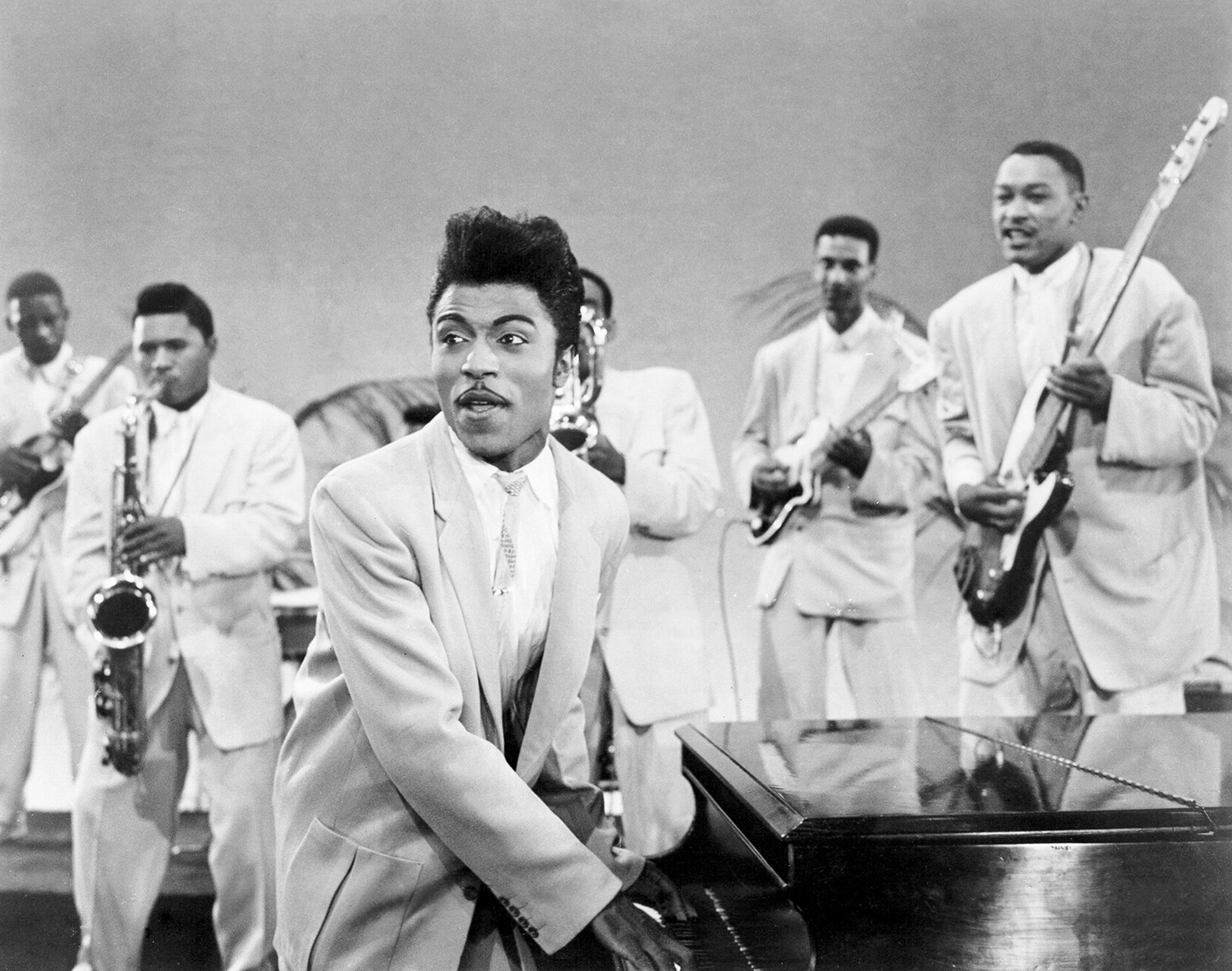 Little Richard Heeby-Jeebies, fast-paced rock and roll, Otis Redding influenceImage Credit: Michael Ochs Archives/Getty
Little Richard Heeby-Jeebies, fast-paced rock and roll, Otis Redding influenceImage Credit: Michael Ochs Archives/Getty
Little Richard’s songs embodied rock and roll’s commitment to speed, optimism, enthusiasm, and restlessness. On “Heeby-Jeebies” (distinct from the Louis Armstrong classic), Richard seemingly sings ahead of the beat, as if his need for acceleration is uncontrollable. This frantic energy perfectly matches the song’s theme of being jinxed by a “bad luck baby.” It’s fitting that Otis Redding, the rawest and most rocking of the Sixties soul greats, who cited Richard as “my inspiration” and even performed with Richard’s band, the Upsetters, began his career performing “Heeby-Jeebies” at a talent show, winning for an impressive 15 consecutive weeks. “Heeby-Jeebies” showcases Little Richard’s unparalleled ability to inject urgency and raw emotion into his music.
“All Around the World” (1956)
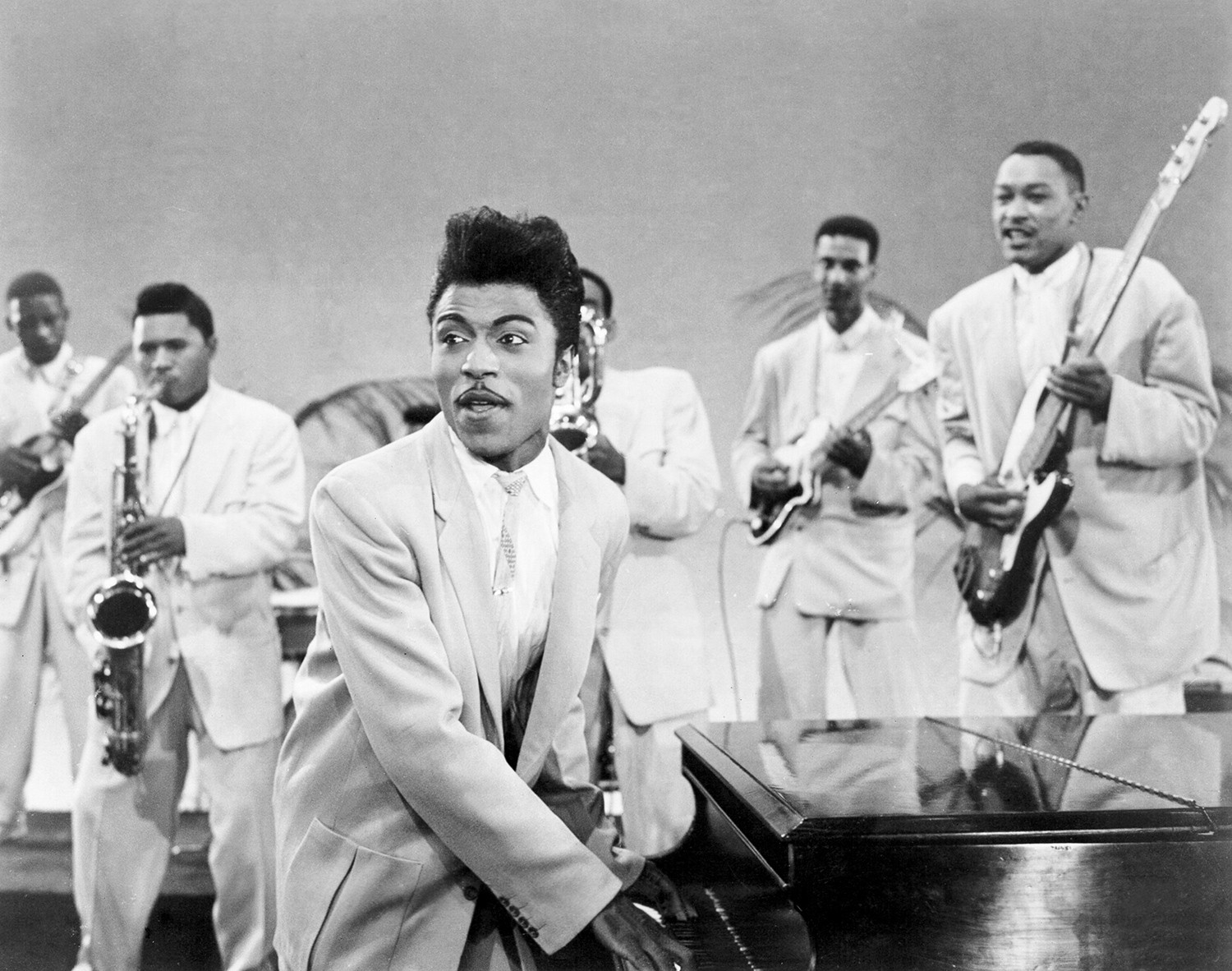 Little Richard All Around the World, global rock and roll, Little Richard rhythm and bluesImage Credit: Michael Ochs Archives/Getty
Little Richard All Around the World, global rock and roll, Little Richard rhythm and bluesImage Credit: Michael Ochs Archives/Getty
Little Richard’s definition of rock and roll was straightforward: fast R&B. “Played uptempo, you call it rock & roll; at a regular tempo, you call it rhythm & blues.” “All Around the World,” with its jumpy rhythm, light feel, and prominent horns, stands apart rhythmically from Richard’s more frenetic hits. While slightly slower, it’s no less exuberant and undeniably rock and roll. By 1956, the message “Rock & roll is here to stay” was widespread, but “All Around the World” amplified this by asserting the new sound as a global phenomenon. Richard himself would soon contribute to proving this point by touring as far as Australia in the following years. This song highlights the global appeal and burgeoning dominance of rock and roll.
“The Girl Can’t Help It” (1956)
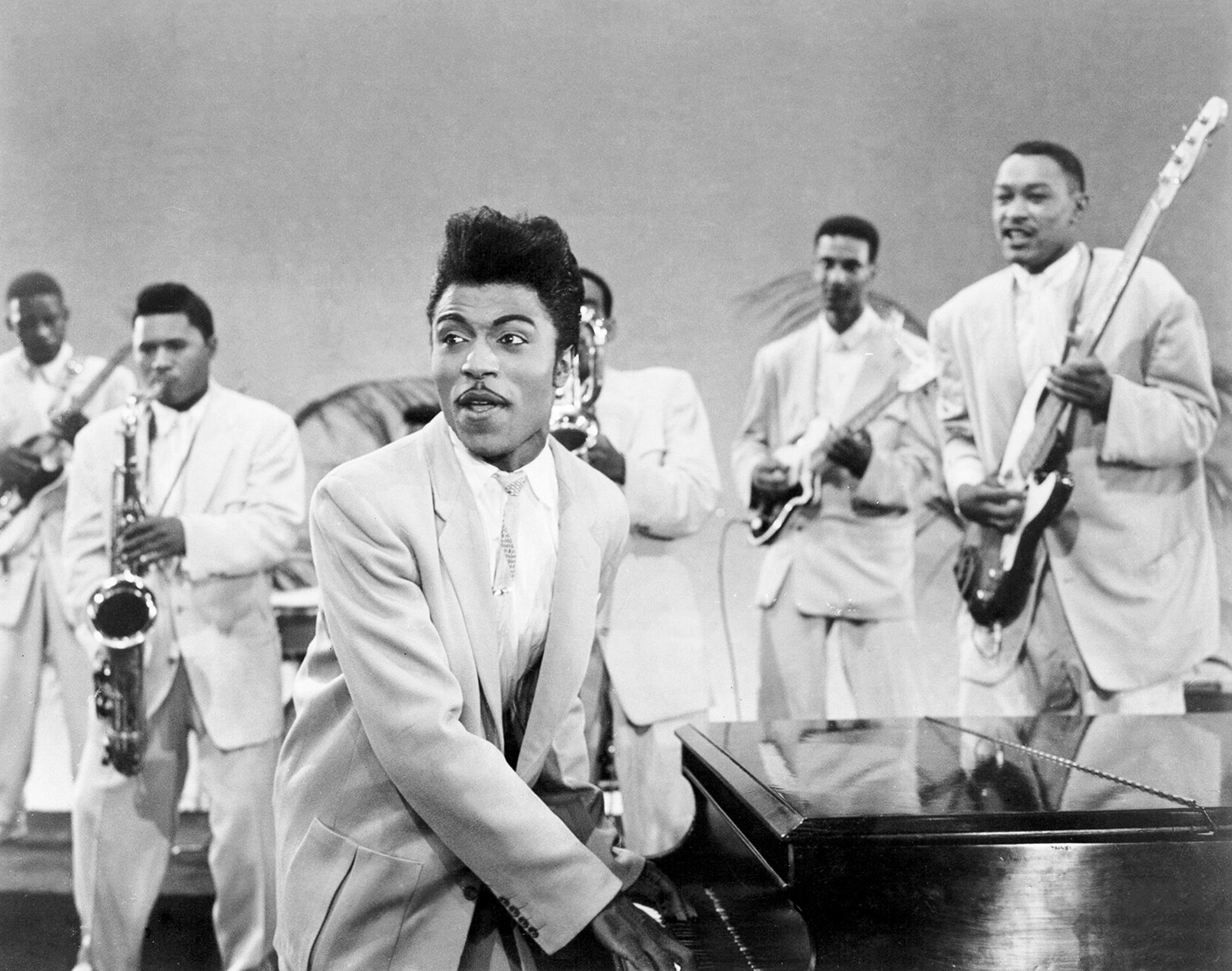 Little Richard The Girl Can't Help It, Jayne Mansfield movie song, Little Richard vocal powerImage Credit: Michael Ochs Archives/Getty
Little Richard The Girl Can't Help It, Jayne Mansfield movie song, Little Richard vocal powerImage Credit: Michael Ochs Archives/Getty
Usually, Little Richard’s vocal power was more than sufficient for any song. “The Girl Can’t Help It,” the title track for the 1956 Jayne Mansfield film, is a rare exception. Here, Richard engages in a call-and-response with anonymous backing vocals, which only amplify the frenzy of this two-and-a-half-minute musical catcall. The beat swings, hinting at its original intended artist, Fats Domino, but it’s Richard’s vocals, pushed to their absolute limit, that infuse the record with an atmosphere of unrestrained sexuality. “The Girl Can’t Help It” demonstrates Little Richard’s ability to command a song even with added vocal support, creating a wild and unforgettable performance.
“Rip It Up” (1956)
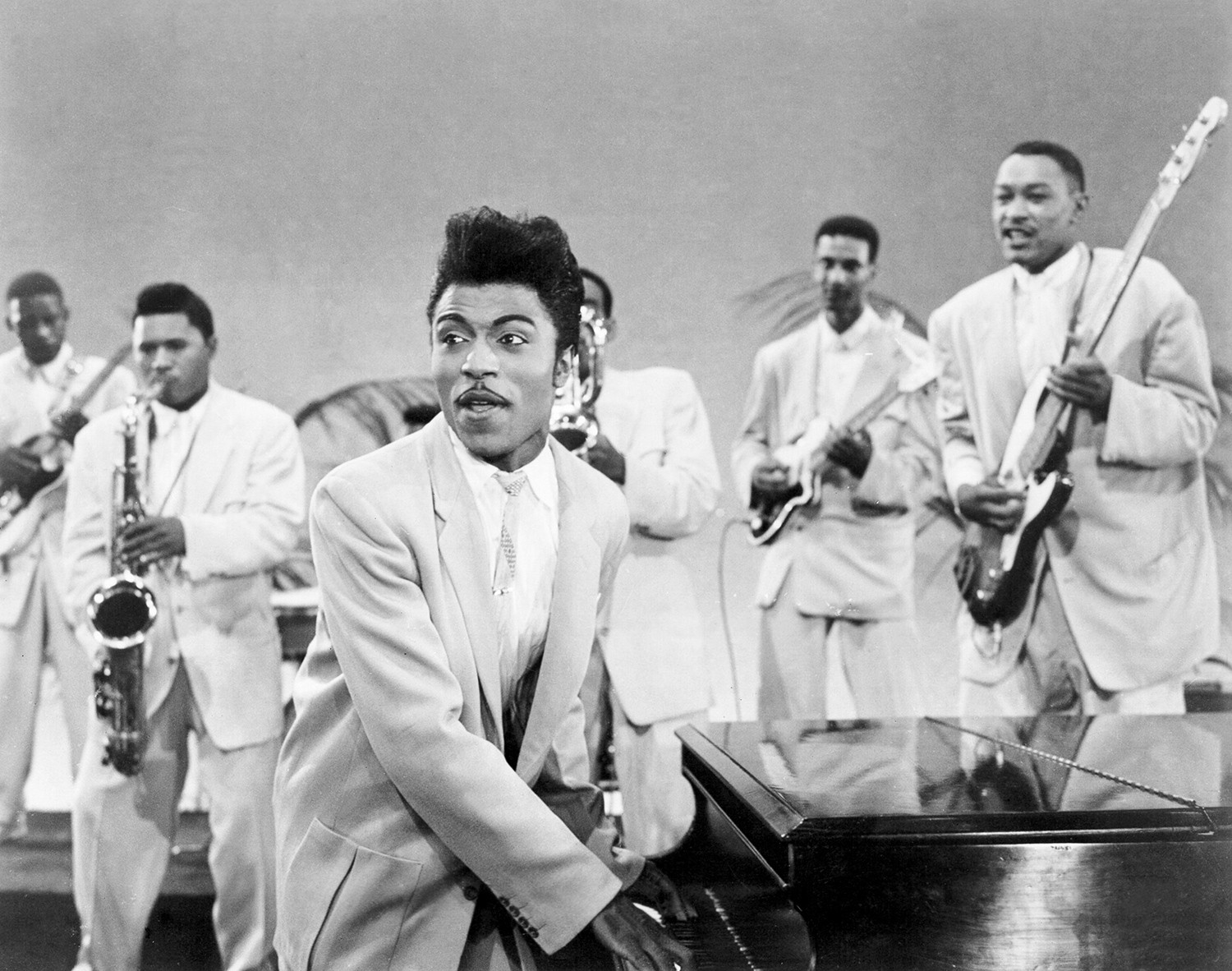 Little Richard Rip It Up, rock and roll mayhem, Little Richard swing influenceImage Credit: Michael Ochs Archives/Getty
Little Richard Rip It Up, rock and roll mayhem, Little Richard swing influenceImage Credit: Michael Ochs Archives/Getty
The title “Rip It Up” suggests an underlying sense of musical violence, and it became Little Richard’s second R&B chart-topper. Despite this implied mayhem, “Rip It Up” surprisingly offers a bit of breathing room. Richard’s vocal isn’t a scream; instead, he floats his falsetto on the chorus. The band swings with ease, transforming the track into a genuine groove. While covers by Elvis Presley and the Everly Brothers took different approaches, Little Richard’s version highlights his facility with jump blues, a charming characteristic for a rocker often perceived as operating at full throttle. “Rip It Up” showcases Little Richard’s versatility and his deep roots in various musical styles.
“Send Me Some Lovin'” (1957)
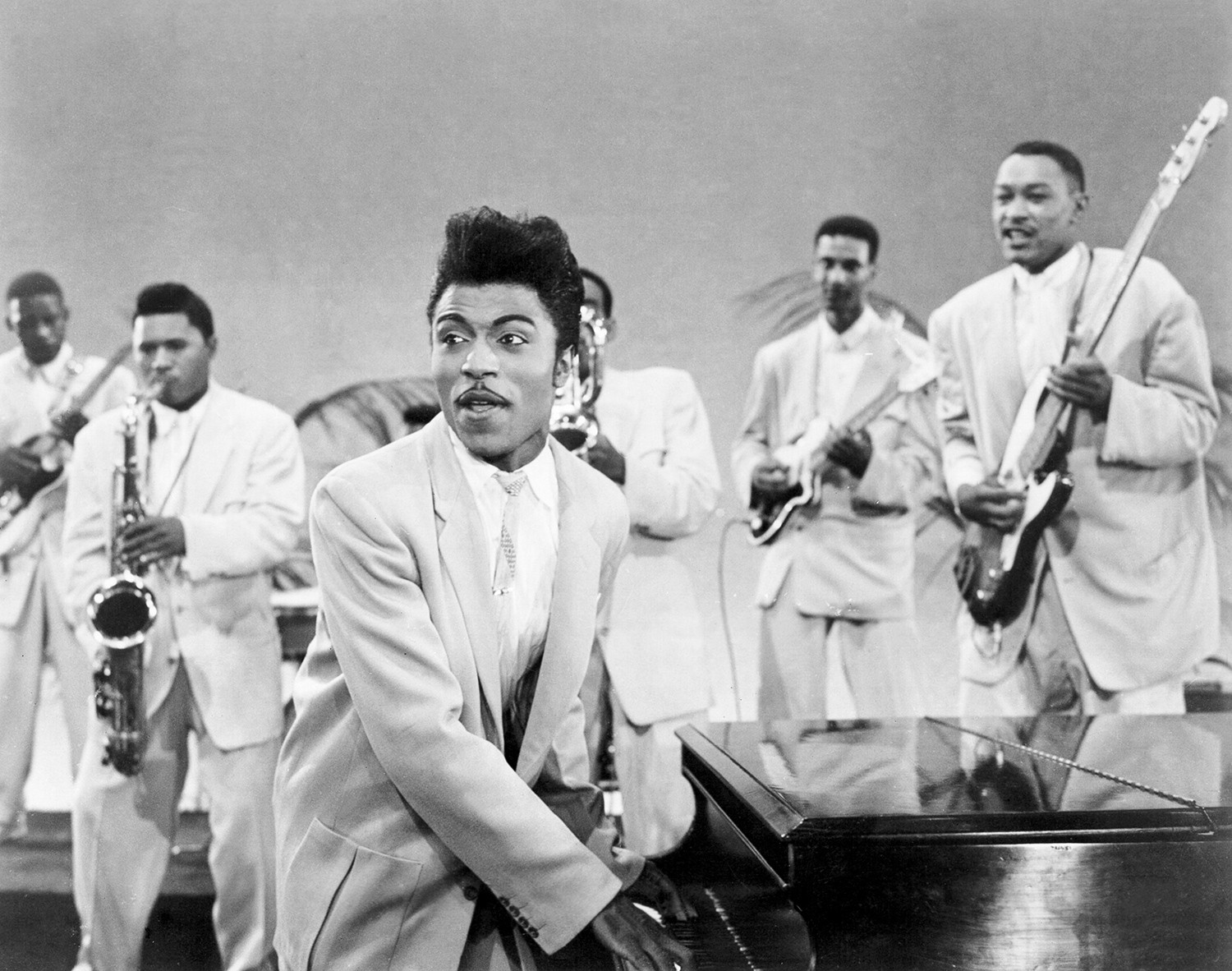 Little Richard Send Me Some Lovin', soul music influence, Sam Cooke Otis Redding Little RichardImage Credit: Michael Ochs Archives/Getty
Little Richard Send Me Some Lovin', soul music influence, Sam Cooke Otis Redding Little RichardImage Credit: Michael Ochs Archives/Getty
Little Richard’s rock and roll impact is undeniable, yet his role in soul music’s development is sometimes overlooked. “He has done so much for our music,” Sam Cooke stated in 1962, and Otis Redding was also a devoted fan. Comparing Richard’s rendition of “Send Me Some Lovin'” to later versions by Cooke and Redding reveals the diverse paths Little Richard’s influence could take. Traces of his caressed consonants and elaborate vowels can be heard in Cooke’s smooth delivery, and his intense moments foreshadow the soulfully ragged pleading perfected by Redding. “Send Me Some Lovin'” reveals Little Richard’s foundational contributions to both rock and roll and soul music.
“Jenny Jenny” (1957)
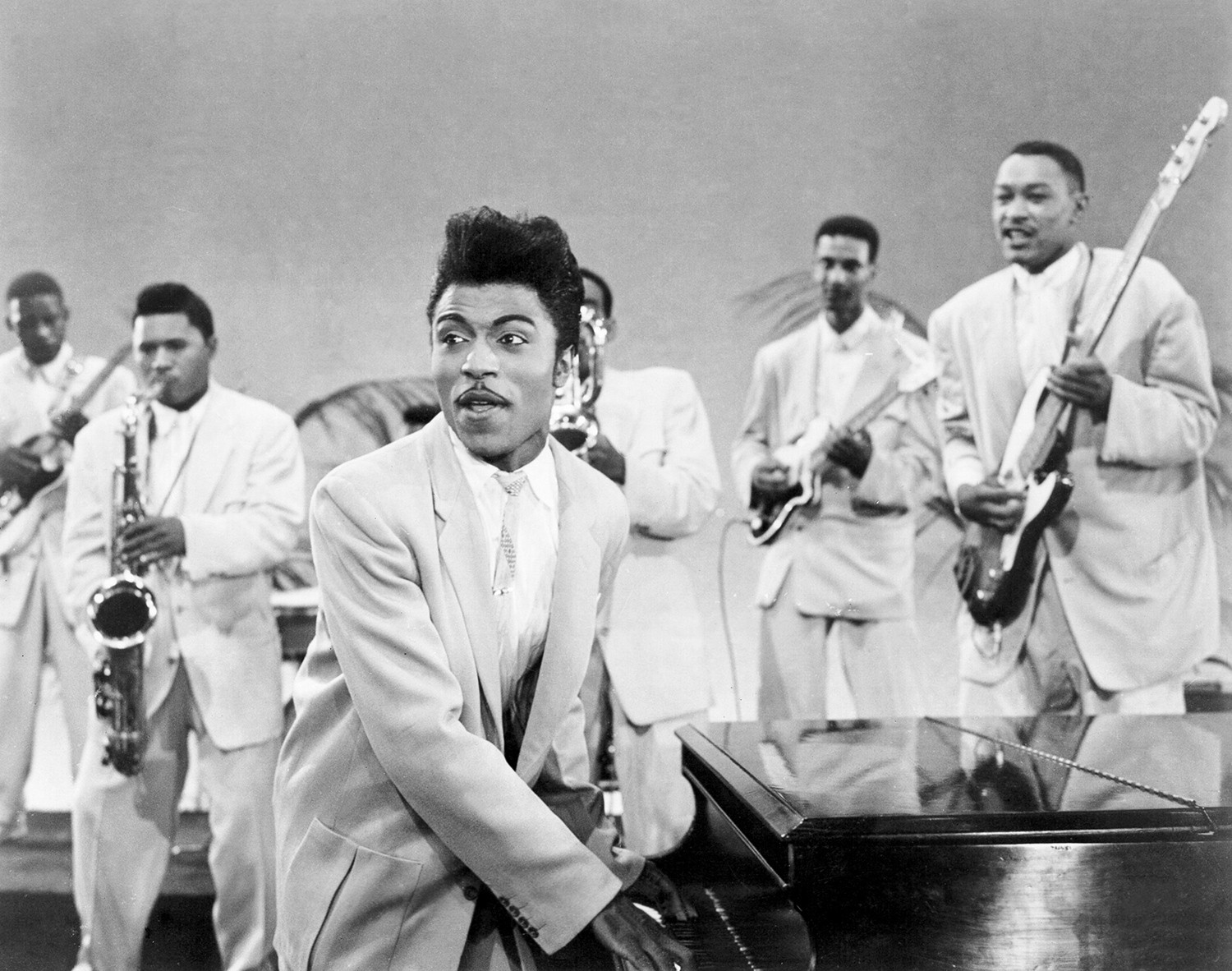 Little Richard Jenny Jenny, Little Richard saxophone, Paul McCartney Little Richard imitationImage Credit: Michael Ochs Archives/Getty
Little Richard Jenny Jenny, Little Richard saxophone, Paul McCartney Little Richard imitationImage Credit: Michael Ochs Archives/Getty
While the interplay between Lee Allen’s tenor sax and Alvin “Red” Tyler’s baritone is dynamic, “Jenny Jenny” is less a traditional song and more a streamlined delivery system for Little Richard’s precious woos. This signature sound resonated across the Atlantic to Liverpool. “I could do Little Richard’s voice, which is a wild, hoarse, screaming thing, it’s like an out-of-body experience,” Paul McCartney explained, acknowledging himself as one of Richard’s best imitators. “You have to leave your current sensibilities and go about a foot above your head to sing it.” “Jenny Jenny” exemplifies the raw energy and vocal acrobatics that defined Little Richard’s unique and influential style, inspiring musicians like McCartney.
“Lucille” (1957)
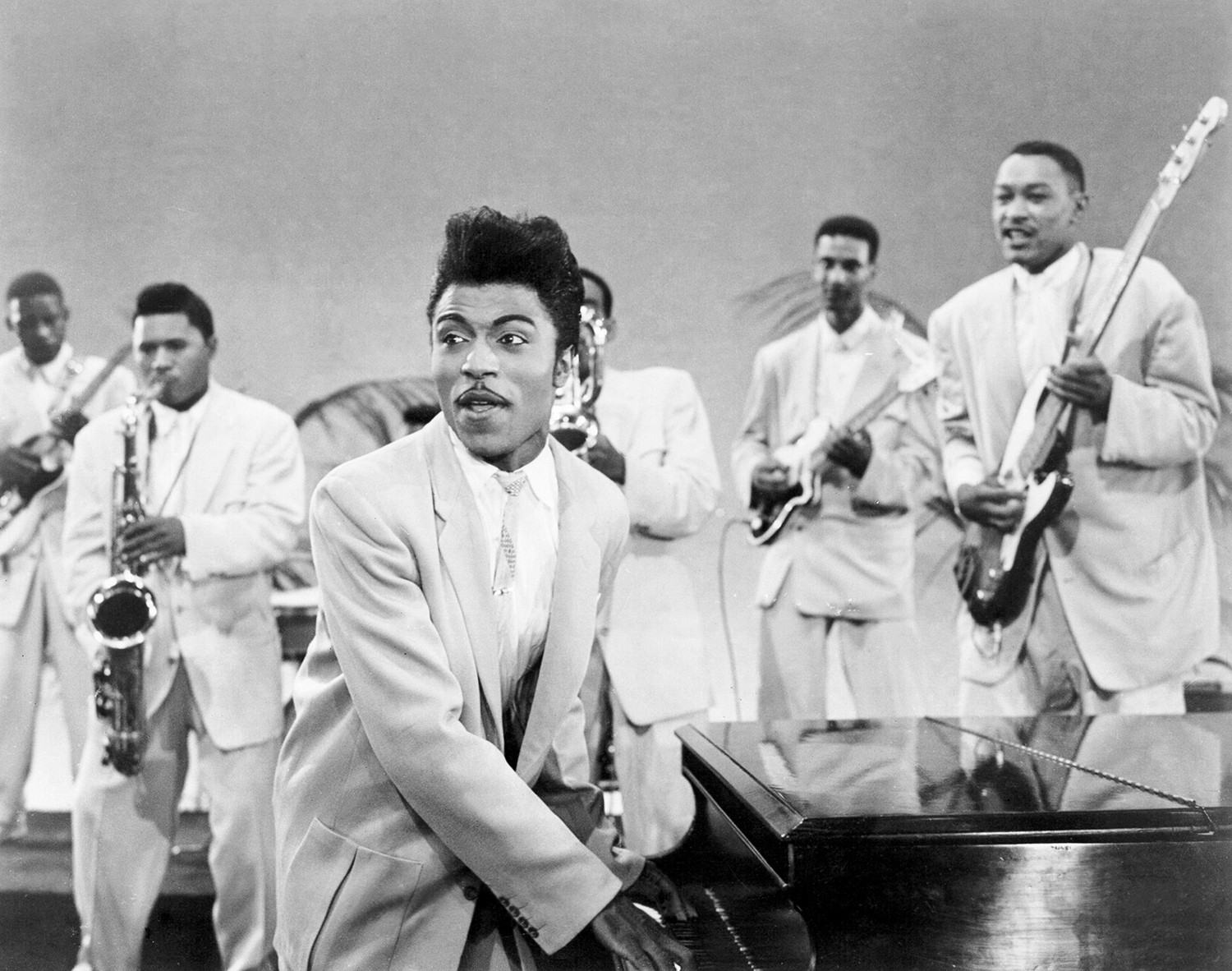 Little Richard Lucille, rock and roll madness, Little Richard coversImage Credit: Michael Ochs Archives/Getty
Little Richard Lucille, rock and roll madness, Little Richard coversImage Credit: Michael Ochs Archives/Getty
“Lucille” is pure musical frenzy. The pounding drums and wailing horns relentlessly drive the refrain. In the hands of guitarists, this brassy blast would be termed a riff, which is precisely what happened when the song was covered by hard rockers like Status Quo, AC/DC, and the Sonics, and even The Beatles. However, nothing surpasses the original, primarily due to Little Richard’s performance. He cries out with a carnal yearning, conveying a sense of desire that, despite his pleas, will likely remain unfulfilled. “Lucille” captures the raw, untamed passion that Little Richard brought to his performances, making it a rock and roll masterpiece.
“Keep A-Knockin'” (1957)
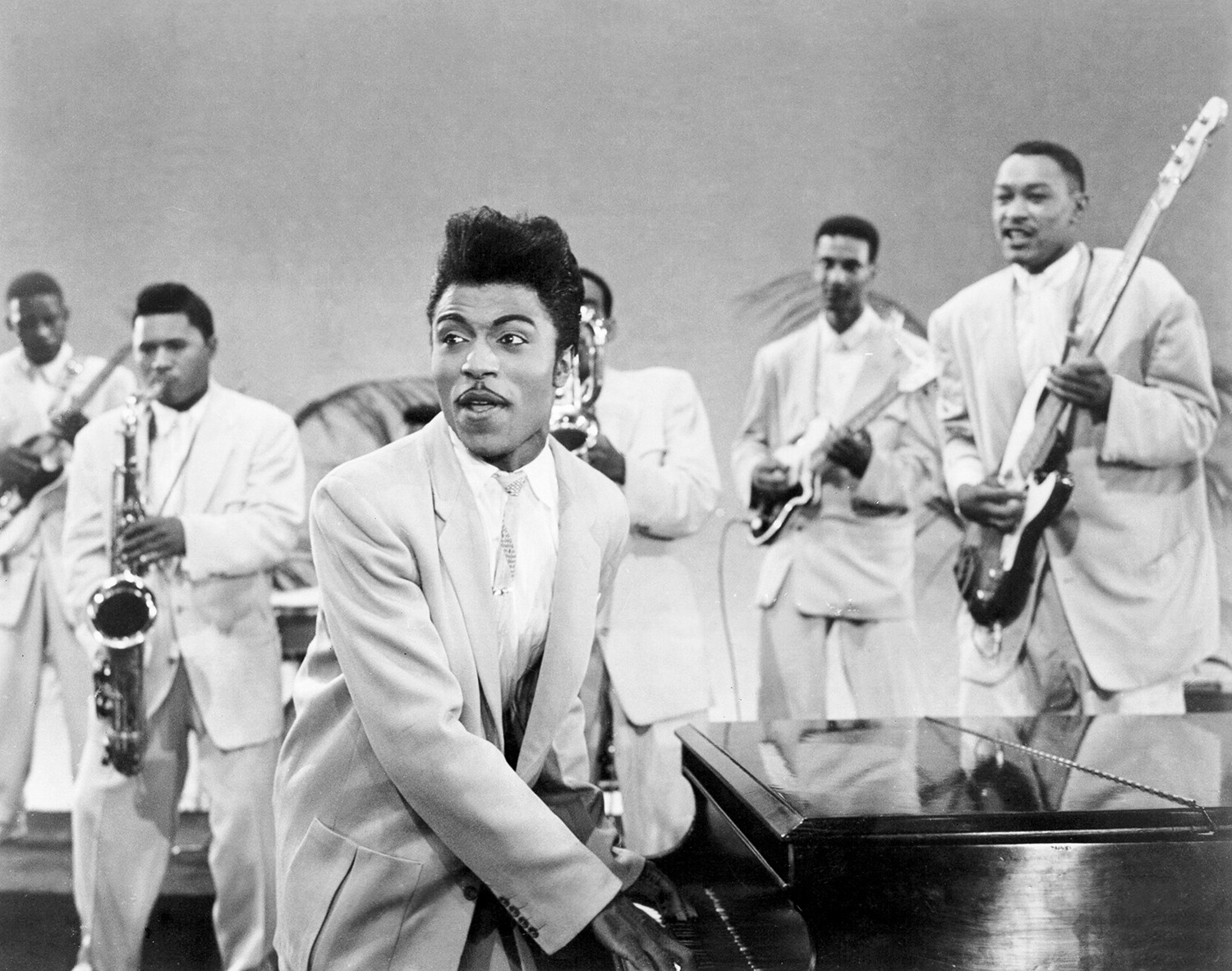 Little Richard Keep A-Knockin', rock and roll definition, Led Zeppelin influenceImage Credit: Michael Ochs Archives/Getty
Little Richard Keep A-Knockin', rock and roll definition, Led Zeppelin influenceImage Credit: Michael Ochs Archives/Getty
John Bonham famously borrowed Earl Palmer’s intro to “Keep A-Knockin'” for Led Zeppelin’s “Rock and Roll,” a clear nod to the fact that this 1957 single is rock and roll in its purest form. Allegedly an answer song to Smiley Lewis’ laid-back 1955 shuffle “I Hear You Knockin’,” “Keep A-Knockin'” is essentially controlled chaos. After Palmer establishes a hard-driving shuffle, Little Richard yells for his unwanted guest to leave, initiating a sonic battle between Richard and his saxophonist for sonic dominance. Rock and roll has rarely sounded louder, better, or more authentic than “Keep A-Knockin’,” a raw and energetic explosion.
“Good Golly, Miss Molly” (1958)
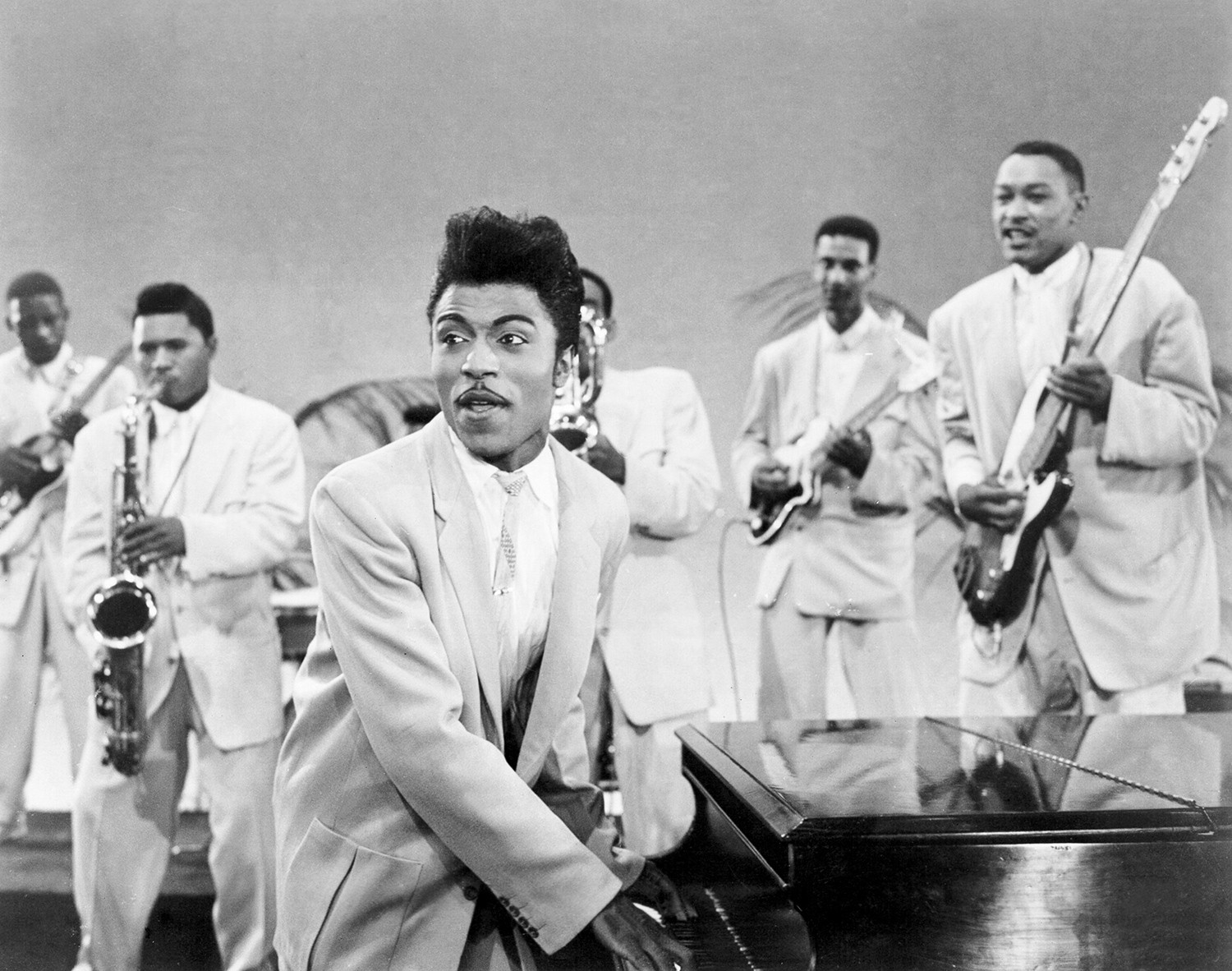 Little Richard Good Golly Miss Molly, Ike Turner influence, Little Richard songwritingImage Credit: Michael Ochs Archives/Getty
Little Richard Good Golly Miss Molly, Ike Turner influence, Little Richard songwritingImage Credit: Michael Ochs Archives/Getty
Illustrating T.S. Eliot’s adage that mature artists steal rather than merely imitate, Little Richard borrowed the catchphrase “Good Golly, Miss Molly” from a Southern DJ named Jimmy Pennick and repurposed Ike Turner’s piano intro from Jackie Brenston’s “Rocket 88.” “I always liked that record,” Richard recalled, “and I used to use the riff in my act, so when we were looking for a lead-in to ‘Good Golly, Miss Molly,’ I did that and it fit.” Yet, “Good Golly, Miss Molly” is unmistakably Little Richard. His voice pushes into the red on every line, and each exclamation of the title sounds spontaneously created. This track exemplifies Little Richard’s genius for synthesizing influences and creating something uniquely his own, a high-energy rock and roll classic.
“Ooh! My Soul” (1958)
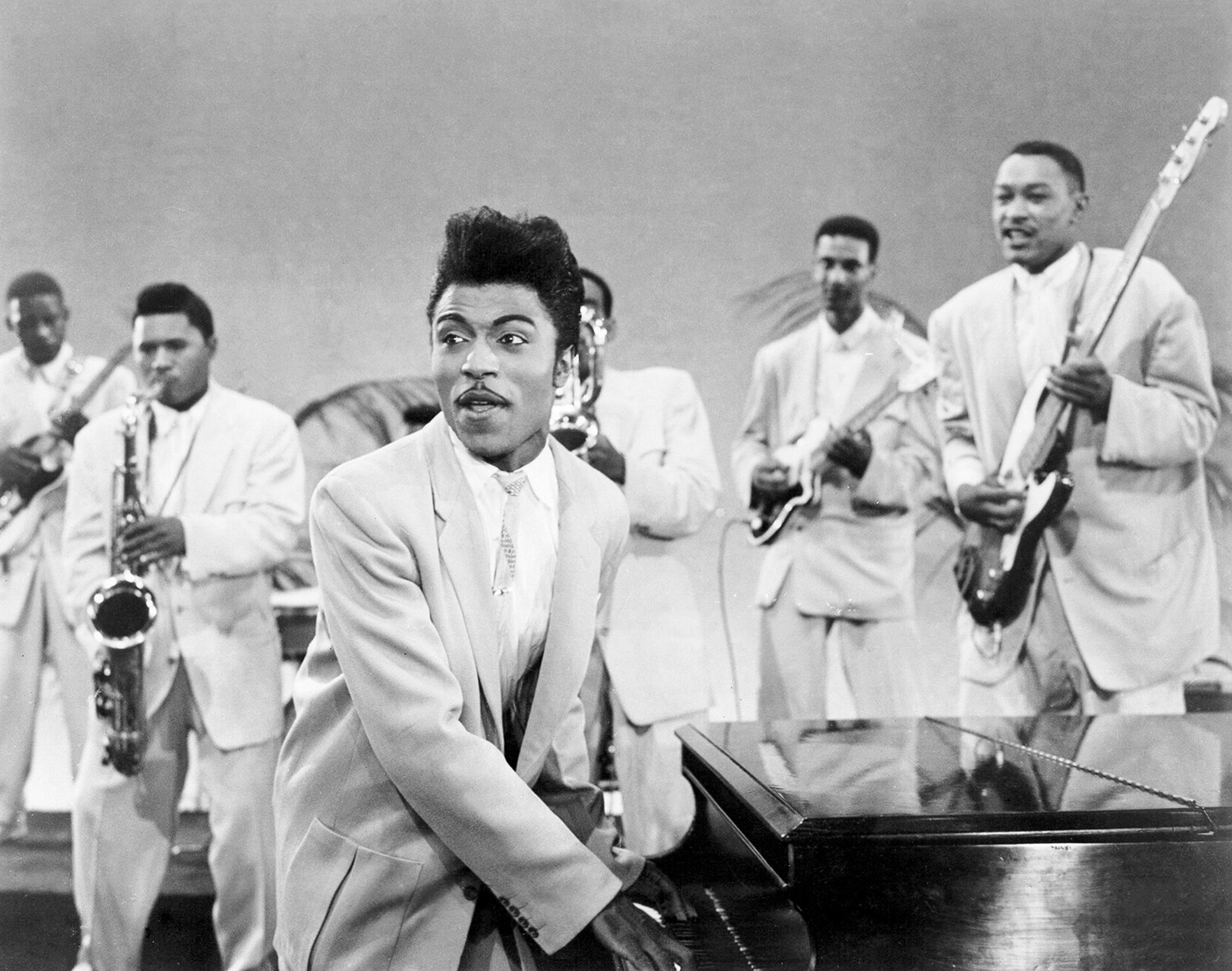 Little Richard Ooh! My Soul, rock and roll androgyny, Little Richard sexualityImage Credit: Michael Ochs Archives/Getty
Little Richard Ooh! My Soul, rock and roll androgyny, Little Richard sexualityImage Credit: Michael Ochs Archives/Getty
“Elvis may be the King of Rock & Roll,” Little Richard once quipped. “But I am the Queen.” He navigated his sexuality with a mix of coyness and candor, sometimes simultaneously. “I believe I was the founder of gay,” he once told John Waters, while simultaneously denying any specific label. From his towering pompadour and dramatic mascara to his orgasmic vocalizations and uninhibited physical performance, Richard was a pioneering figure of rock and roll androgyny. “Ooh! My Soul” might be his most overtly flirtatious and gender-bending recording. He powers through the verses like a showboating athlete, then squeals the title with coquettish charm. “Ooh! My Soul” captures Little Richard in self-seduction, its post-climactic giggle confirming his irresistible self-love.
“Kansas City”/”Hey Hey Hey Hey” (1959)
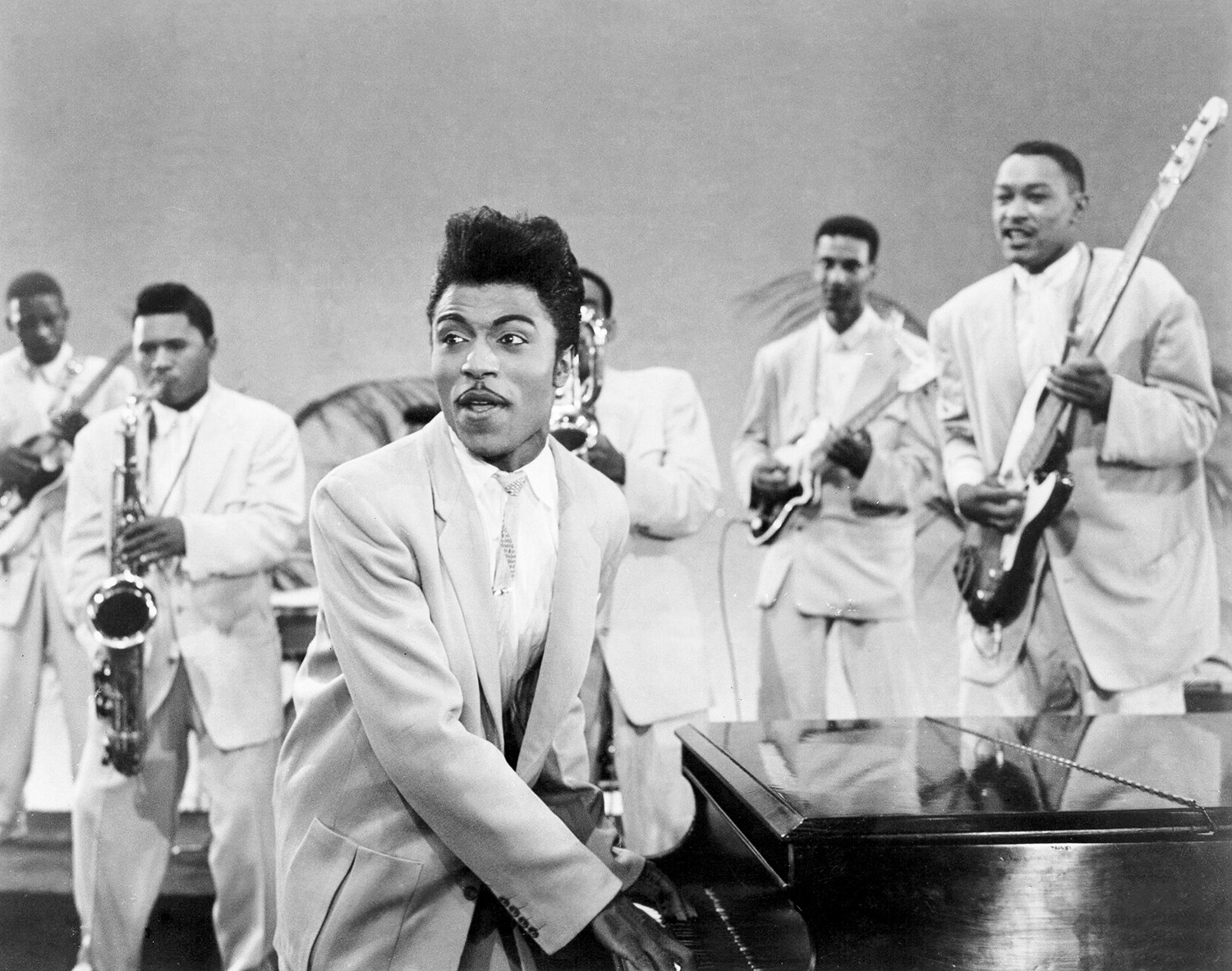 Little Richard Kansas City Hey Hey Hey Hey, Lieber Stoller classic, Beatles covers Little RichardImage Credit: Michael Ochs Archives/Getty
Little Richard Kansas City Hey Hey Hey Hey, Lieber Stoller classic, Beatles covers Little RichardImage Credit: Michael Ochs Archives/Getty
Little Richard recorded two versions of the Lieber/Stoller classic “Kansas City” in 1955. The first, more conventional take closely resembled the original Little Willie Littlefield recording. However, on the second take, he infused the song with his signature style, adding a shout of “hey hey hey hey” echoed by a chorus. Before the second take was released in 1959 (around the same time Wilbert Harrison had a hit with his own version), Richard recorded “Hey Hey Hey Hey,” about “goin’ back to Birmingham,” which shared the same introductory guitar lick and drum roll as “Kansas City.” This clever move not only transformed “Kansas City” into a Little Richard song but also allowed him to collect royalties when The Beatles covered it. This song highlights Little Richard’s ability to reinterpret and own existing material, making it uniquely his own.
“By the Light of the Silvery Moon” (1959)
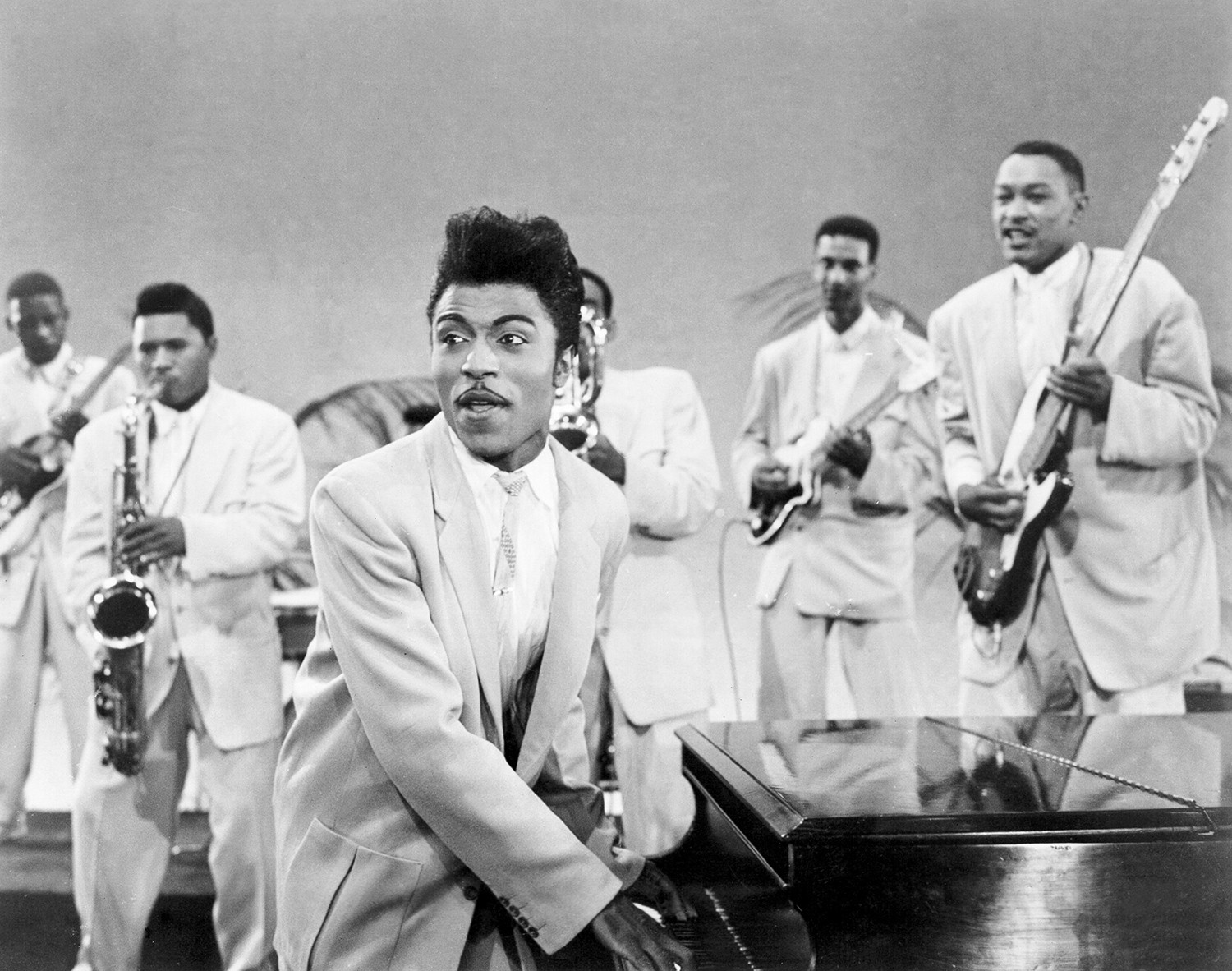 Little Richard By the Light of the Silvery Moon, Fats Domino influence, Tin Pan Alley revivalImage Credit: Michael Ochs Archives/Getty
Little Richard By the Light of the Silvery Moon, Fats Domino influence, Tin Pan Alley revivalImage Credit: Michael Ochs Archives/Getty
In 1956, Fats Domino achieved success reviving older popular songs, taking the 1940s tune “Blueberry Hill” to the top of the charts. Little Richard followed suit in 1959, revisiting the Tin Pan Alley chestnut “By the Light of the Silvery Moon,” originally from 1909. His version is nimble and lighthearted, driven by honking horns and a persistent shuffle rhythm. While the rhythm is infectious, the focus is squarely on Richard’s vocals. He teeters on the edge of camp, delivering a sly wink rather than a straightforward rendition of the beloved classic. “By the Light of the Silvery Moon” shows Little Richard’s playful side and his ability to inject his personality into diverse musical styles.
“Bama Lama Bama Loo” (1964)
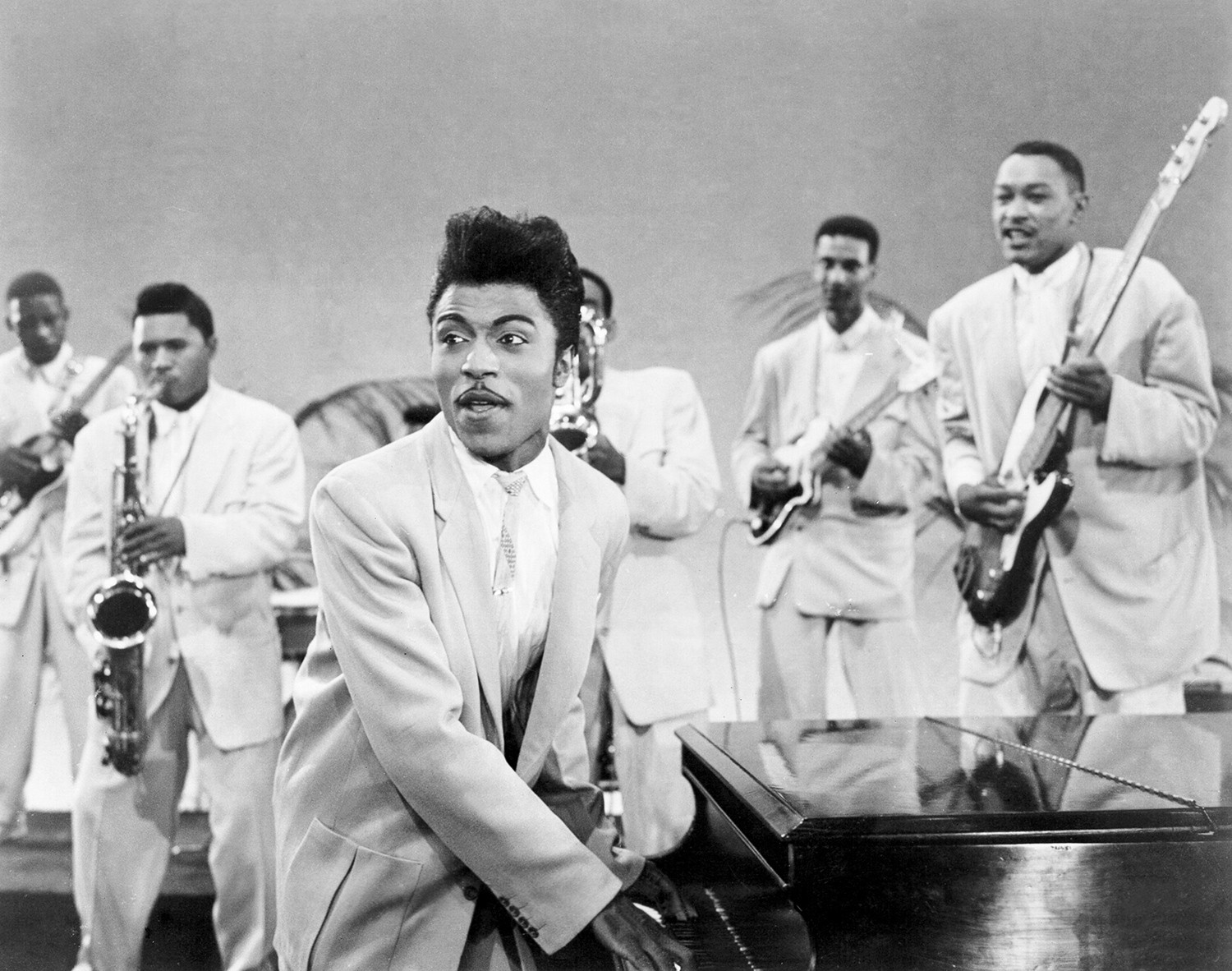 Little Richard Bama Lama Bama Loo, Little Richard comeback, Little Richard agingImage Credit: Michael Ochs Archives/Getty
Little Richard Bama Lama Bama Loo, Little Richard comeback, Little Richard agingImage Credit: Michael Ochs Archives/Getty
“Bama Lama Bama Loo” marked Little Richard’s first attempt to recapture his earlier success. After a period of label hopping in the early Sixties, he returned to Specialty in 1964 and released this piece of raving nonsense. With its gibberish lyrics and screams, the song clearly aimed to evoke “Tutti Frutti,” but it falls slightly short because Richard is older and slightly less wild. However, the shrewd Richard turned aging into an advantage, slowing the rhythm slightly to create a thick, grooving shuffle. “Bama Lama Bama Loo” demonstrates Little Richard’s resilience and his ability to adapt his sound while retaining his core energy.
“I Don’t Know What You’ve Got but It’s Got Me” (1965)
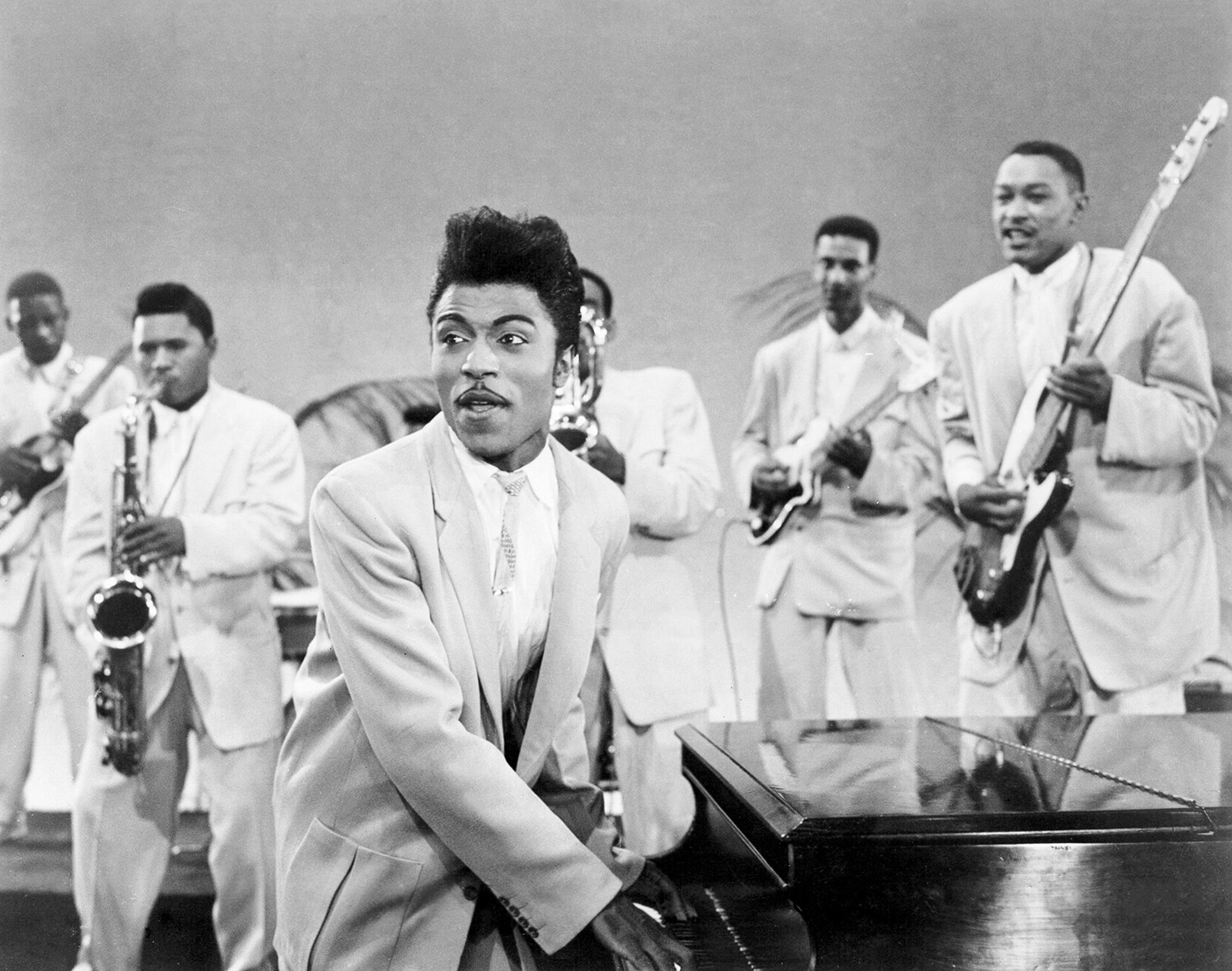 Little Richard I Don't Know What You've Got but It's Got Me, Little Richard soul music, Stax Volt influenceImage Credit: Michael Ochs Archives/Getty
Little Richard I Don't Know What You've Got but It's Got Me, Little Richard soul music, Stax Volt influenceImage Credit: Michael Ochs Archives/Getty
While it didn’t cross over to the pop charts, “I Don’t Know What You’ve Got but It’s Got Me” became Little Richard’s last major R&B hit in late 1965. Fittingly, the song’s sensibilities lean towards Sixties soul, not Fifties R&B. This churchy, slow-burning track, so languid it was split into two parts for its single release, finds Little Richard embracing the deep soul emerging from Southern labels like Stax/Volt. This earthy setting brought out a new dimension in Richard’s artistry. He connected with his gospel roots more profoundly than on his earlier Specialty recordings, proving his capacity for powerful and passionate testimony. “I Don’t Know What You’ve Got but It’s Got Me” showcases Little Richard’s soulful depth and adaptability.
“I Need Love” (1967)
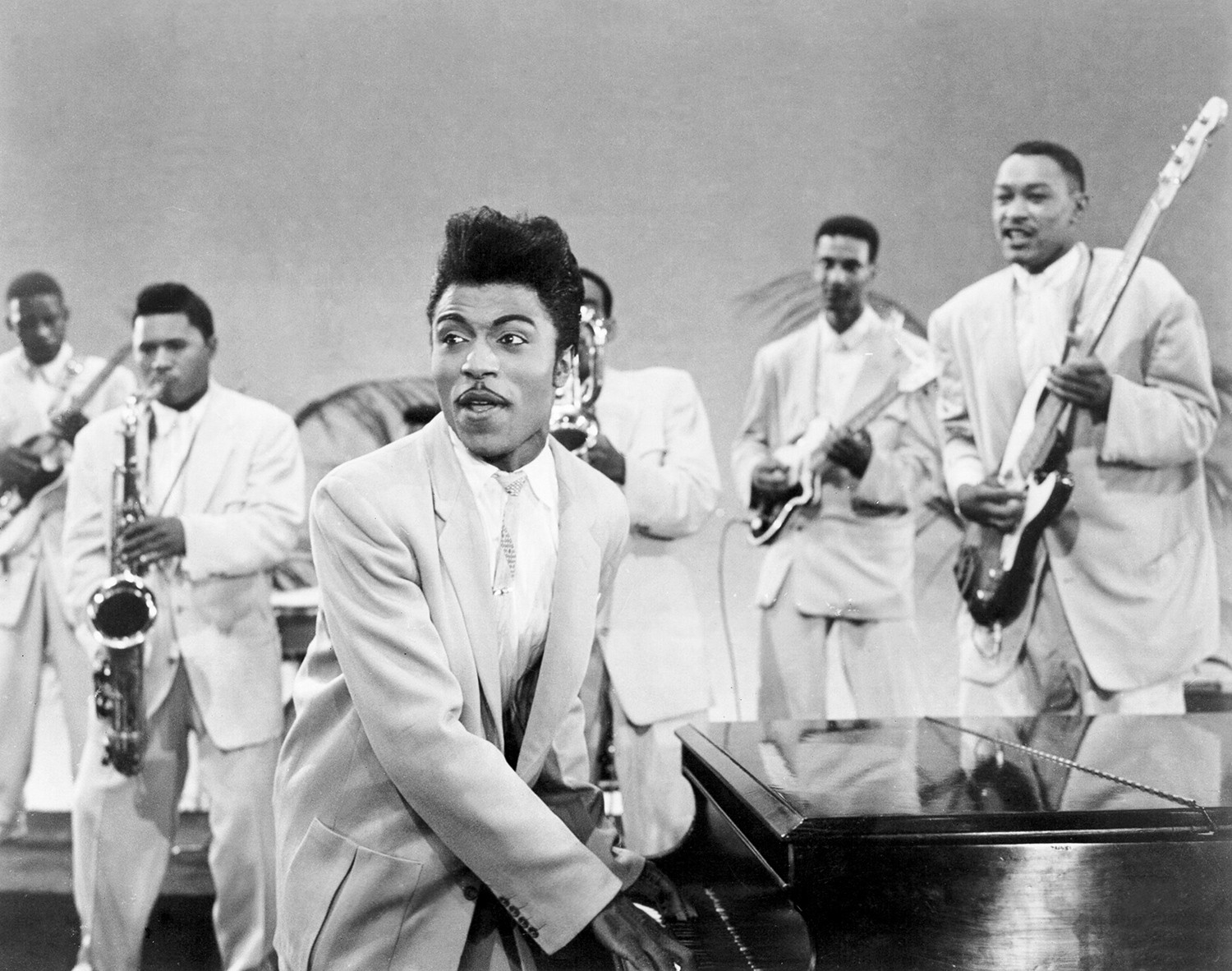 Little Richard I Need Love, Southern soul groove, Little Richard comeback attemptImage Credit: Michael Ochs Archives/Getty
Little Richard I Need Love, Southern soul groove, Little Richard comeback attemptImage Credit: Michael Ochs Archives/Getty
Little Richard’s mid-Sixties period at Okeh Records was largely unsuccessful as he navigated the evolving soul music scene. He had a minor hit with “Poor Dog (Who Can’t Wag His Own Tail),” but the electrifying “I Need Love” was far superior. Despite failing to chart even in the R&B rankings, this seven-inch single features Richard riding an uptempo Southern soul groove reminiscent of Otis Redding. He personalizes this vibrant sound with a touch of showbiz flair, modulating his delivery and building to explosive, cathartic choruses. “I Need Love” is a hidden gem in Little Richard’s discography, demonstrating his ability to excel in a soul music context.
“Freedom Blues” (1970)
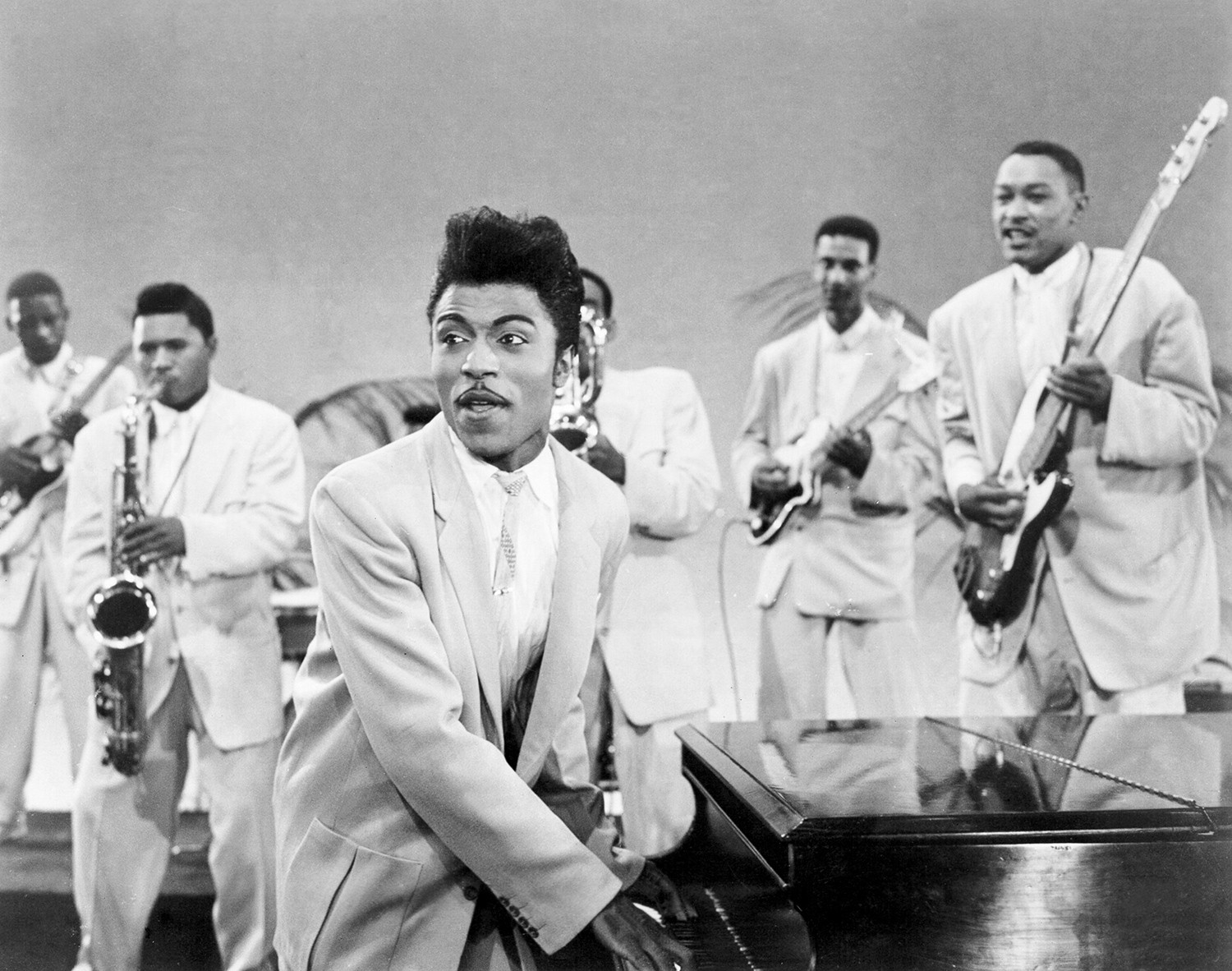 Little Richard Freedom Blues, Little Richard 1970s, civil rights anthemImage Credit: Michael Ochs Archives/Getty
Little Richard Freedom Blues, Little Richard 1970s, civil rights anthemImage Credit: Michael Ochs Archives/Getty
Like many rock and roll pioneers, Little Richard was given an opportunity to connect with a new audience in the early 1970s. Signing with Reprise in 1970, he resisted the temptation to simply revive his old hits, a path Fats Domino often took. Instead, Richard dove headfirst into the era’s thick, funky sound. “Freedom Blues,” deeply rooted in Southern groove, is part civil rights rallying cry and part psychedelic sign of the times. What’s remarkable is not just Richard’s impassioned performance but how he integrated counterculture elements into a song that remains powerful today. “Freedom Blues” is a testament to Little Richard’s enduring relevance and his willingness to evolve with the times while staying true to his powerful musical identity.
